In October, the Federal Reserve will begin circulating a redesigned $100 bill. It's only the fourth design for thenote in nearly 100 years of circulation.
|What did previous designs look like?
|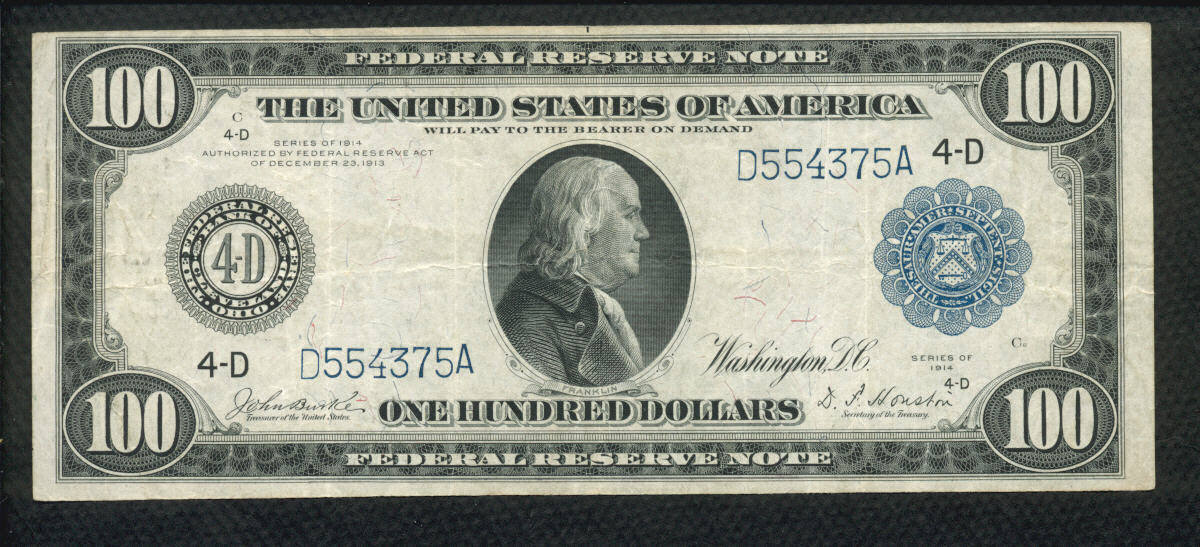
1914
|In 1914, the Federal Reserve issued its first $100 FederalReserve Note with a portrait of Benjamin Franklin on the front,also known as the obverse, and allegorical figures representinglabor, plenty, America, peace and commerce on the reverse. Thebills were “large-sized notes,” which were 3.125 by7.4218 inches and the standard size of all U.S. currencyprinted between 1863 and 1928.
|
Next, 1928
||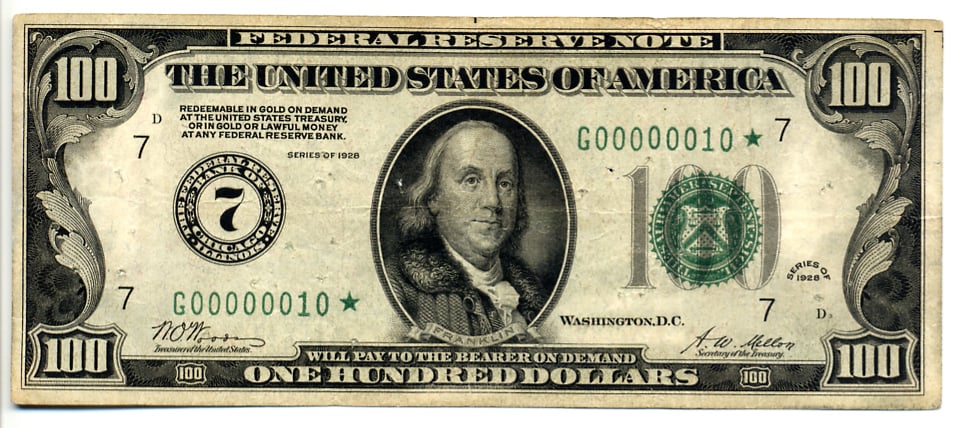
1928
|U.S. currency was reduced to its current size of 2.61 by 6.14inches in 1928. The portrait of Benjamin Franklin was changed toone painted by French painter Joseph-SiffredDuplessis. A vignette of Philadelphia'sIndependence Hall, where both the Declaration ofIndependence and the United States Constitution weredebated and adopted, was featured on the reverse.
|It was issued as a Federal Reserve Note with a greenseal and serial numbers and also as a GoldCertificate with a golden seal and serial numbers. The GoldCertificate was taken out of circulation in 1934 when the U.S.withdrew from the gold standard. In 1966, the motto “In God WeTrust” was added to the reverse.
|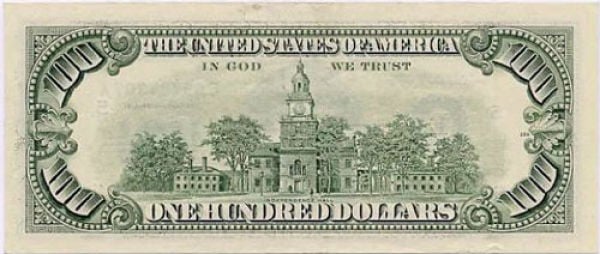
Next, 1996
||
1996
|The entire layout of the $100 bill was redesigned in 1996 todeter counterfeiting. In addition to completely redesigning thelayout, a watermark of Benjamin Franklin was added to theright side of the bill.
|The Fed also added optically variable ink that changed fromgreen to black when viewed at different angles, a higher qualityand larger portrait of Franklin, and hard-to-reproduce fine lineprinting around Franklin's portrait and Independence Hall. In 1991,the Federal Reserve had added security features such as interwovenred and blue silk fibers, microprinting, and a plastic securitythread; these features were also included in the new design.
|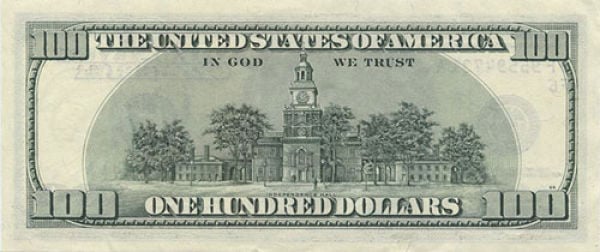
Next, 2013
||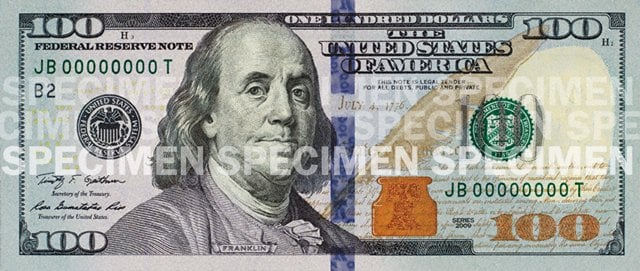
2013
|The new $100 bill was announced in 2010 and was supposed toenter circulation in early 2011, but problems in the printingprocess delayed circulation. Several additional security featureshave been added. New items on the obverse side include the brownquill that was used to sign the Declaration of Independence, faintphrases from the Declaration, a bell in the inkwell that appearsand disappears depending on the angle at which the bill is viewed,teal used as a background color, the removal of the border from theportrait Benjamin Franklin, a blue 3D security ribbon, and to theleft of Franklin, small yellow 100s whose zeros formthe EURion constellation, a pattern that prevents the billsfrom being duplicated with a photocopier.
|The reverse features small yellow EURion 100s and has the finelines removed from around the vignette of Independence Hall. Inaddition to preventing counterfeiting, the bills are also designedto assist the visually impaired. The new bills will be put intocirculation Oct. 8. Training materials can be downloaded and/orordered at the Fed's newmoney.gov website.
|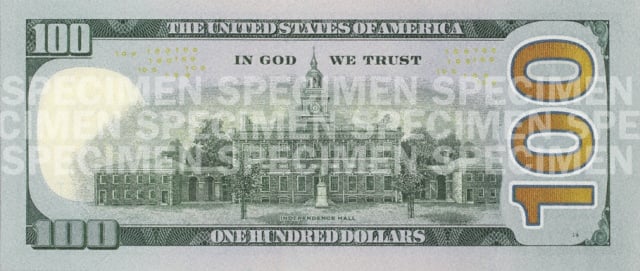
Complete your profile to continue reading and get FREE access to CUTimes.com, part of your ALM digital membership.
Your access to unlimited CUTimes.com content isn’t changing.
Once you are an ALM digital member, you’ll receive:
- Critical CUTimes.com information including comprehensive product and service provider listings via the Marketplace Directory, CU Careers, resources from industry leaders, webcasts, and breaking news, analysis and more with our informative Newsletters.
- Exclusive discounts on ALM and CU Times events.
- Access to other award-winning ALM websites including Law.com and GlobeSt.com.
Already have an account? Sign In
© 2024 ALM Global, LLC, All Rights Reserved. Request academic re-use from www.copyright.com. All other uses, submit a request to [email protected]. For more information visit Asset & Logo Licensing.









